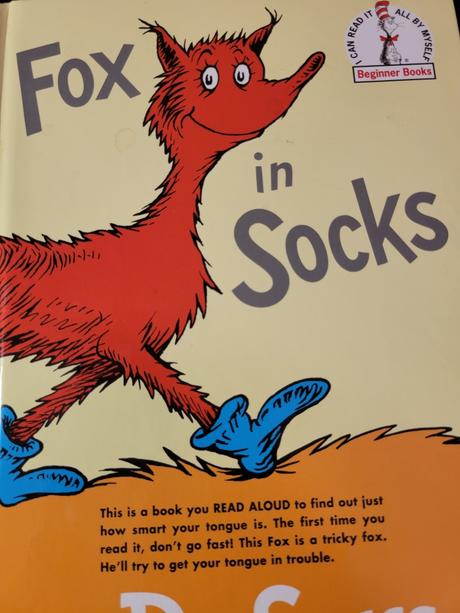NB: You will want to read the first and second installments of this series before proceeding.
When Detective Joseph Fox began investigating the murder of Chinese activist Alice Chow, virtually every element of the case had been nailed down.
Fox knew that two Black males had been beefing across the street from a Black Baptist Church. He knew that one of these men, identified as James “June Bug” Smith, had raced away from the scene. He knew the second man had fished a handgun out of a blue Toyota and fired two shots at June Bug. And he knew that Alice Chow caught a bullet intended for June Bug.
All he lacked was the name of the shooter.
As we have seen, Larry Johnson initially laid the crime on Darrell Haskell, a Black male dressed in military fatigues that street witnesses saw running from the scene. But no one saw Haskell with a gun, and his alibi checked out. He had been running errands for elderly residents of the apartment building and, startled by gunfire, the military veteran had quickly exited the scene.
If the shooter wasn’t Haskell, who was it? Larry couldn’t provide a name. But he promised that, if given a chance to work his contacts in the neighborhood, he would soon be able to steer Detective Fox in the right direction.
But Larry Johnson was a wanted man. Charged with a laundry list of crimes (including breaking and entering), Larry had failed to appear at a court hearing, and a bench warrant had been issued for his arrest. So, the moment Larry stepped forward as a witness, he was arrested and shipped off to jail.
Fox realized that his theory of the crime was largely dependent on Larry Johnson’s testimony. If he lost Larry, the investigation would almost certainly land in the cold case file.
So Fox pulled a few strings. If Larry promised to use every waking moment digging up information, he would be incarcerated in Hope Village, a massive privately operated halfway house located in southeast Washington. Hope Village was designed for federal inmates serving the last six months of their sentences. Most residents were released during the day, (some were even furnished with subway fare), so long as they promised to spend the day working for a legitimate employer, or looking for lawful work.
 Hope Village was the only halfway house in the DC area in 1997
Hope Village was the only halfway house in the DC area in 1997But Hope Village featured notoriously flexible security policies and Fox was able to get Larry Johnson placed there even though he didn’t fit the criteria. Larry would be released every day until midnight, so long as he spent his time beating the bushes for useful information. Essentially, Larry functioned as a police informant or a jailhouse snitch. At first, he took his new role very seriously.
Two or three days after Ms. Chow died, Larry Johnson approached Larry Haskell. “You know the guy who killed that lady” Larry told Darrell, so “just go ahead and tell (the police).”
When Haskell didn’t work out, Larry started feeding Fox names like “Snotface,” “Little Anthony,” and Larry’s friend, Barbara Marshall. No one had anything helpful for Fox.
So, when Detective Fox had Larry Johnson brought in for questioning on March 17th, both men were feeling desperate. Larry had been stringing Fox along for six weeks now, tossing out one useless lead after another.
Larry understood his situation. If he didn’t give Fox a name, the rest of the story was functionally useless. If nothing changed it would be goodbye Hope Village, hello DC Jail.
In Fox in Socks, a classic Dr. Seuss children’s book, a smart-ass Mr. Fox tries repeatedly to get the hapless Mr. Knox to repeat a series of bizarre tongue twisters. “I can’t blab such blibber-blubber,” Knox tells Fox, “my tongue isn’t made of rubber.”

Mr. Fox is unphased. “Here’s an easy game to play,” he tells Knox, “Here’s an easy thing to say, ‘Who sews whose socks? Sue sews Sue’s socks. Who sees who sew whose new socks, sir? You see Sue sew Sue’s new socks, sir.”
There is on key difference between the Dr. Seuss character and the DC detective. The game the detective liked to play really was easy. Fox would feed Larry a name and ask him to repeat it back to him. It was an easy game to play; an easy thing to say.
The detective laid two pictures on the desk in front of Larry and asked him if he could identify one of them. One picture was June Bug, the other was a filler.
“That’s June Bug,” Larry replied.
Next, Fox laid out eight pictures of young Black males and asked Larry if he could identify anyone. Seven pictures were fillers. The remaining picture was David Q. Black. Since Black and Larry had grown up in the same neighborhood, there was little chance that this would backfire. One thing is certain, Joseph Fox introduced David Black into his own investigation. It was a hunch. A fishing expedition.
As Larry admitted at trial, he and the man in the picture belonged to two different generations and never socialized. But, sure, Larry had seen the guy before.
Fox asked Larry if he could name the individual he had identified. Larry explained that, in the Black community people go by nicknames.
“Okay,” Fox said, “what’s his nickname?”
“Rob,” Larry said.
Then came the big question, “did you see Rob shoot at June Bug?”
“Yes,” Larry replied, “that’s the guy.”
David tells me he has never gone by “Rob”. This should come as no surprise. Rob is short for Robert, not David. At trial, the prosecutor asked each defense witness in turn if the defendant went by “Rob”. “No,” they replied, “never.” If Whitted had anticipated this answer, he wouldn’t have asked the question.
Asked to describe the crime at trial, Larry repeatedly mentioned June Bug, but kept referring to the shooter as “the other individual”. This wording was so persistent, and so peculiar, that Kenneth Whitted, the Assistant US Attorney, tried to get his witness to name the shooter.
“Let me ask you this question,” Whitted said, “Mr. Johnson, did you ever at any point recognize the individual who was with June Bug?”
“The first time?” Larry asked evasively.
“At any time,” Whitted answered brusquely.
“Yes,” Larry said.
“Who was it?”
“One time, yeah?” Larry said, clearly stalling for time.
“Who was it,” Whitted reiterated.
“The defendant,” Larry blurted out.
Whitted had no choice but to ask his witness if “the defendant” went by the nickname “Rob”.
On the witness stand, Larry blanked on “David Black” and “Rob” until Whitted bailed him out. When you aren’t working from actual memory, it’s hard to keep track of the details.
The unspoken communication in this exchange was brutally simple. “You’ve had six weeks to name the shooter and you’ve come up empty. So I’m gonna give you one last chance. I am going to show you pictures of eight men, only one of whom grew up in your neighborhood. If you can pick him out, I will continue to help you; if you can’t, we’re done.”
Joseph Fox probably didn’t utter a syllable of that message. He didn’t have to. It might as well have been chiseled into the wall behind him.
It was an easy game to play, and both men knew the rules.
Alexandra Natapoff, the leading authority of snitch testimony, offers this terse assessment of the problem: Informants lie primarily in exchange for lenience for their own crimes, although sometimes they lie for
money. In order to obtain the benefit of these lies, informants must persuade the government that their lies are true. Police and prosecutors, in turn, often do not and cannot check these
lies because the snitch’s information may be all the government has.
Informants lie primarily in exchange for lenience for their own crimes, although sometimes they lie for money. In order to obtain the benefit of these lies, informants must persuade the government that their lies are true. Police and prosecutors, in turn, often do not and cannot check these lies because the snitch’s information may be all the government has.
Alexandra Natapoff, BEYOND UNRELIABLE: HOW SNITCHES CONTRIBUTE TO WRONGFUL CONVICTIONS
In the Alice Chow homicide case, the official narrative was a police-generated fantasy from start to finish. At this early point in the process, no other witness had observed an argument across the street from Lilly Memorial Baptist Church. No other witnesses had noticed the blue Toyota or spotted the shooter. No one else saw June Bug sprinting down the street.
And every single detail had been hand fed to Johnson by the police. Police officers originated the theory that Alice Chow was felled by a stray bullet; Larry just repeated back to the police what they were telling him. It was an easy game to play.
Detective Fox has described his process with Larry Johnson in a variety of venues: at a pre-trial hearing, to the jury, and during the appeal process. It always passed muster. Everyone realized that the government’s witnesses had serious credibility problems, but witness reliability was for the jury to assess. And the jurors clearly found the testimony credible enough to sustain a conviction. Problem solved!
But studies of juror psychology have repeatedly concluded that jurors have a hard time evaluating the credibility of witnesses like Larry Johnson. One study found that “Prosecutors bolster jailhouse snitch testimony simply by putting them on the witness stand as witnesses, signaling to the jury that the prosecutor believes their testimony is trustworthy.”
En route to the conviction of David Black, Detective Joseph Fox and AUSA Kenneth Whitted were driven to distraction by the antics of Larry Johnson. He was far from an ideal witness. But, as they would hasten to point out, Johnson’s testimony was corroborated by a second witness. That’s our story for next time.
Email Address:
- Police-generated testimony 3: an easy game to play
- Police Generated Testimony 2: The Spotted or Herbaceous Backson
- Police-generated testimony 1: Six Impossible things before breakfast
- Police-generated testimony 1: David Black is innocent (and I can prove it)
- A day of reckoning in Winona, Mississippi: Why Fannie Lou Hamer and Curtis Flowers are forever united in a corner of my mind
